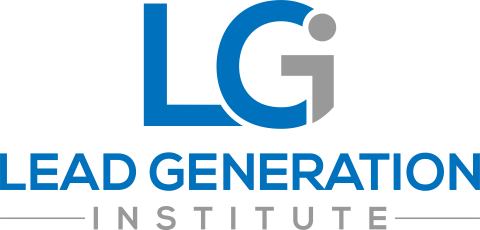Content marketing is an important tool to have at one’s disposal. According to the Content Marketing Institute, “Content marketing is a strategic marketing approach focused on creating and distributing valuable, relevant, and consistent content to attract and retain a clearly defined audience — and, ultimately, to drive profitable customer action.”
In other words, content marketing is the strategic use of written words, images, and video as marketing materials to reach and maintain a connection with your target audience. You’ll find elements of content marketing spread throughout other forms of digital marketing, complementing each other for greater success and synergy.
Content creation sits at the base of all other marketing campaigns. It provides the fuel that drives all other activities such as SEO, email, social media, advertising, etc. All of these act as a framework behind a successful content marketing strategy.
What is B2B Content Marketing?
As its name would suggest, B2B marketing is a means by which one business will use the content it creates to expand its audience, develop and strengthen its brand recognition, and ultimately drive leads and sales from other companies. At first glance, the main difference between B2B, B2C, and other forms of content marketing would seem to be the exclusive use of content by businesses for businesses.
But the fact of the matter is that B2B content marketers need to perfectly balance all three main elements that contribute to great content marketing – engagement, usefulness, and high quality – much more than B2C and other content professionals. This doesn’t mean that a B2B marketer can’t publish the occasional off-topic think piece, but they can’t get away with posting bland, boring, and forgettable content, ever.
If the reader can’t apply the actionable elements of the content to their own business or work, the content has completely missed its mark. B2B marketers should always need to be seen as leading resources for professionals in their respective industries and fields of expertise. Bland content will quickly break this reputation.
In recent years, the role of B2B content marketing in product promotions and brand awareness has grown in importance many times over. It has helped companies boost their visibility in front of their prospective customers and, in turn, generate more sales and partnerships.
Over 91% of B2B marketers use content marketing in one way or another. In addition, it was also shown to be three times as effective in terms of lead generation and 62% less expensive when comparing it to paid search and other traditional outbound methods. It should come as no surprise then that nine out of ten B2B marketers see it as an invaluable asset.
Below are several aspects of B2B content marketing that you will need to pay special attention.
Developing Personas
Before you start with your content marketing, you’ll first need to get to know your target audience. The content you create will have to resonate with the wants, needs, and expectations of your audience before you can develop your strategy.
The first step of this process is creating a customer persona or profile of your ideal client. You should look to create these personas based on the companies you’re targeting as well as the people in charge of the entire decision-making process – not just the CEO.
Keep in mind that within a typical business or enterprise, there are anywhere between six to seventeen decision-makers. For best possible results, you should try to focus your attention on all of them to leave no stone unturned. But if this isn’t possible or required, the key personas that are a must are the end user, decision maker, and financial authority.
Start by asking yourself the following questions:
- Who is this person?
- What are their challenges?
- What are their responsibilities?
- With whom do they work and to whom do they report?
- How much purchase authority do they have?
- What’s their communication preference?
- Do they have a relationship with your company today?
- What other competitors or vendors do they work with today?
- Where do they get their industry news?
As a general rule, the end user’s concerns will be closely tied to implementation, learning curve, and management. The decision maker, on the other hand, will be more interested in how effective the end user will be at their job. The financial authority, however, will be more concerned with costs, service level agreements, escalation policies, terms of the contract, etc. As you can see, each has an entirely different perspective on the same topic, meaning that there will be different possible conversations to have with them.
By building a persona for each of these three individuals, you will have a much better understanding of who they are, what they want, what’s important to them, as well as how to create relevant content for each.
How Much Content Do You Need?
Statistically speaking, B2B companies that publish over 16 blogs per month will see 3.5 times more traffic than companies that publish up to four posts. This content will remain available for readers to consume and share within their networks, as long as it stays relevant, of course. According to an internal analysis from Hubspot, 75% of their post views were from old posts, while 90% of blog leads were also from old content.
But this doesn’t answer the question of content quantity – more like content frequency. To accurately answer it, however, we need to return to the personas mentioned above and see how they influence this question. You should know that there are a total of five stages as part of each persona’s buyer journey. These are as follows:
- The Learning Stage – I think I have a problem?
- The Solving Stage – How do I solve that problem?
- The Comparison Stage – Am I solving the problem the right way?
- The Purchasing Stage – Help me make a purchase decision
- The Loyalty Stage – After purchase and as a means of maintaining a lasting relationship.
These stages are critical because you’ll need to create content for each of them. All pieces of content should answer a specific question that your prospective customers have when progressing along their buyer’s journey. You will need to figure out what these questions are and how to answer them, either overtly or tangentially.
The total number and types of questions that need to be answered will vary at each step of the journey. Nevertheless, as a general rule of thumb, they will be broader at the beginning and will become increasingly specific and numerous closer to the end of the journey when your potential customers will be making sure that your product or service is the right choice for them.
The general idea is to first imagine each persona’s questions at each stage of the buyer journey and create relevant content for each of those questions. This will be a sort of giant FAQ exercise.
So, to finally answer the question of how much content you’ll need, we will use a simple mathematical formula. We will need the total number of buyer personas (in our case three), the total number of journey stages (five), and the total number of questions for each persona at every stage. For simplicity’s sake, we’ll say that there are three personas and four questions for each stage, which means that you have 3 (personas) X 5 (stages) X 4 (questions per persona per stage) = 60 (questions answered/pieces of content needed).
How and where you answer these questions can and should vary. Keep in mind that it’s not always sufficient to create a detailed blog post for each question at every stage.
Executing a Content Assessment and Atomization
This total number should give you a rough minimum as to how much content you’ll need. You should also refine this process by mapping your already-existing content and group it based on these five buyer stages. During the process, you will undoubtedly find gaps or content that needs to be updated. Filling those gaps and repurposing outdated content should be your priority. Your old content shouldn’t just sit there, collecting digital dust. With a bit of sprucing up and more up-to-date information added in, you can repurpose it at only a fraction of the cost.
In addition, you shouldn’t limit yourself to just blog posts. Not every piece of information will be equally as useful in blog-form. Some may work better as white papers, case studies, worksheets, guides, infographics, how-to videos, podcasts, webinars, etc. Here is where content atomization comes into play. In short, this is a practice of breaking down a broad theme (question) into smaller, more focused, and more strategic content.
You should start by serializing your content so that you can deliver smaller but more substantive pieces of content over several days or weeks. Second, you should try your best to squeeze the most out of every content idea or existing content to use your resources in the most efficient way possible. This way, you’ll also be able to deliver better results.
If you’re already in the habit of creating broad, thorough, and all-encompassing content, chances are you’ve got the basis of atomization laid down, which implies that you’re already answering several queries at a time. The question is, will you have a total of 60 large content pieces, or will you have smaller but better-focused ones?
Once all of this is finished, you can start putting everything else into motion. If you want to learn more about B2B content marketing and how to successfully implement it into your business, contact us today or subscribe to our newsletter.




